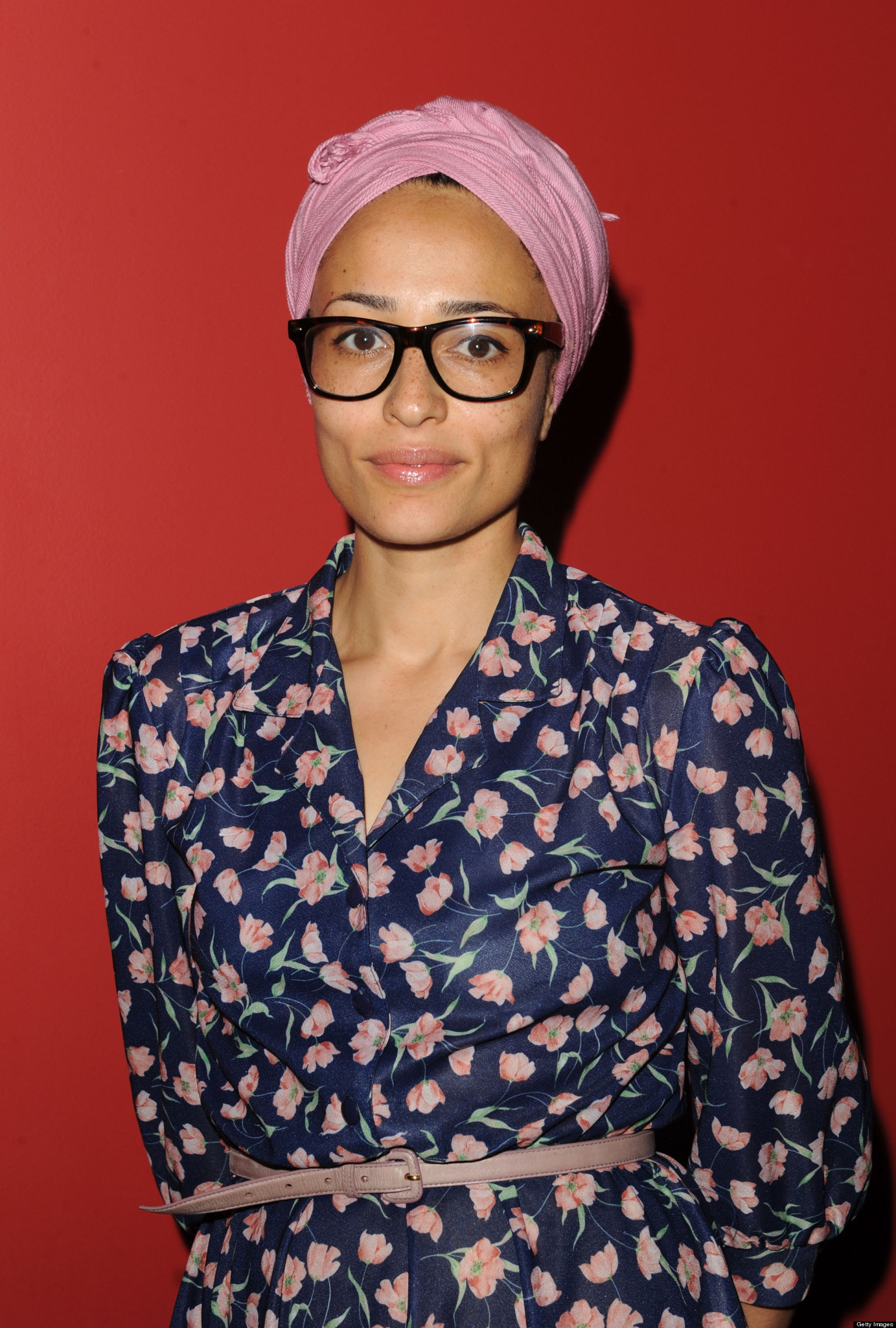I just came home from seeing Zadie Smith speak at Nourse Theatre as a part of the City Arts and Lectures, "On Arts" series benefiting the 826 Valencia Scholarship Program.
She spoke in conversation with Steven Winn, who was impressive himself as an interviewer. The shepherding of thoughtful and provocative conversations is an art, and like Terry Gross and Krista Tippett, two of my favorite interviewers, Winn was clearly well-read and researched, having immersed himself in Smith's work; he was able to draw out universal themes and (what seemed like) urgent questions out of the details of her writing. I appreciated that very much.
But of course, Zadie herself was not overshadowed, as she was equally, if not more tactful and intelligent. She wore bell-bottom jeans and high-heeled boots, which elongated her slim legs, a black blazer, and a pastel turban around her head. Thick black glasses framed her very-chiseled face, the structure of which you could make out from far out in the audience. Poised, graceful, relaxed, with a calm disposition, a keen wit, and an affable sensibility. She was funny and often self-deprecating, which literary audiences like these do appreciate, as we tend to be overly critical of everything and of ourselves, and seeing that quality in other people endears us to them.
Her voice was a delight to listen to--the kind of mellifluous British intonations that charms an American audience, and she talked about how her voice, which through schooling had become refined and posh, ostracized her from her working class family.
*Disclaimer: I wrote these quotes down in the dark so they may not be 100% accurate
On creating new stories: "I have a sense of their shape and color in my head... When NI start something new, I'm looking for a different feeling..."
On the importance of acuity in writers: "being able to judge the reality of the feeling of what you wrote"
On imperfect novels: "There is rarely a perfect novel, but I think imperfect novels have a lot to offer us."
On how writing a novel is like singing karaoke, which makes novels much longer than necessary: "Just give me one more verse."
On creating the feeling of being in a city like San Francisco, walking along a stretch of Fillmore where coffee shops and crack addicts co-exist within a few blocks: "You have to make a decision about how you feel when you are dealing with that kind of extremity."
On fiction imitating reality: "Fiction is always about 'as good as,' not being reality itself."
On how her generation of writers were influenced by TV: "our minds are structured like sitcoms... the structural way of thinking and perceiving."
On loving America and only being able to understand it after living here because outsider perception of America is so wholly influenced by pop culture: "Pop culture is the veil over the reality of American life."
On what middle class people do: "get as much isolation as possible,"
On Obama being a good writer: "he's ambivalent, which is why he's a good writer, but I'm not sure good writers make good presidents."
On people who want to be President: be wary of them.
On traveling: "always be aware of the illusory nature of wherever you are."
On self-awareness and the bubbles we live in: "keep remembering that your existence is a construction you build around you."
On the reading she assigns to her undergraduate fiction class: early Hilary Mantel, Muriel Spark, Teju Cole, Brian Moore
On what George Saunder ("a fantastic Buddhist") can teach all of us about the illusory connection between success and contentment: "You have to let go of the idea that the things of this world will satisfy you."
On the importance of reading: "You can't be original without knowing completely what came before." (Apparently both she and Michael Chabon both used to pen stories under famous author names, like Agatha Christie and P.G. Wodehouse)
On women getting about 'not needing a man': "humans need humans to be happy"
On writing: "the art of the heart...the life of the art...The whole business of novel-writing is life."
At one point, she read a passage from her most recent novel NW, and the passage that she read, though it included several characters, only made mention of two names: Natalie, a black lawyer, and her daughter, Naomi -- which is very uncanny because my name is Natalie and my sister's name is Naomi.
10.28.2013
10.24.2013
these are the female pioneers
Last night I went to an event at 18 Reasons called "Inside the California Food Revolution: the Female Pioneers," celebrating the launch of Joyce Goldstein's recently published book, Inside the California Food Revolution.
The night featured a panel of six women including Joyce, among them: Amaryll Schwertner of Boulette's Larder & Bouli Bar; Emily Luchetti, pastry chef of Waterbar and Farallon; Kathleen Weber of Della Fattoria; and Adriana Silva, co-owner of Tomatero Farm. Each told her story of entering and working in the Californian food industry.
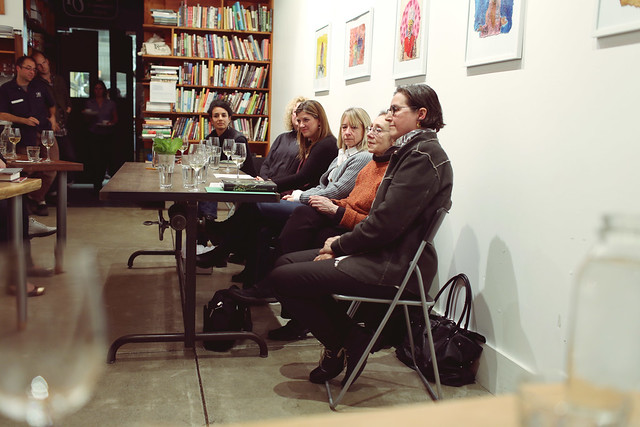
I've always felt particularly connected to strong and independent women, the ones who are bold, fearless, and unafraid of speaking their minds (Think Mary Karr or Gabrielle Hamilton), and these women were all of those things. The common thread in the stories these women told was the desire to feed and care for people. They weren't in it for fame or glamour; they definitely were not in it for the money. Working in the food industry meant long hours, sweat, and tears, but what kept them going was the persistent engagement with the present moment and an unrelenting curiosity about the possibilities of food. These women found fulfillment in the most vital form of manual labor, a labor of love that is first and foremost essential to survival, but also wholly satisfying in a physical, emotional, and intellectual way.
Here's what I want to remember from the night:
*the importance of understanding history: what came before informs the direction going forward. This almost means discovering narratives, ethnographies, and cultural perspectives to build up one's knowledge of the food and farming ecosystem.
*the need for line cooks in San Francisco, and beyond that, the need for reform in cook's wages (by abolishing the tipping system and mandating a service charge)
*the state of the food industry now: the exponential increase in restaurants; the return to a male-dominated industry; the hype-driven restaurant business; the difficulties of being able to live/survive in San Francisco while working in the food industry.
*learning technique in cooking school is not the same as learning to taste in the kitchen.
*the importance of having a relationship with food and with the people who grow it. The impact of the consumer relationship with food and farms on the entire ecosystem.
*food as a community: these women all knew each other, supported each other, and shared tricks of the trade with each other. They had relationships not only with each other but with consumers.
*cooking as a grounding practice: "after a long day, some people come home and drink five bottles of wine, when all they really need to do is chop an onion." I need to remember this when I come home weary and wanting.

We enjoyed a sampling of the panelists' most iconic creations. Here is what we ate:
*early girl tomatoes with burrata & basil
*abruzzese lentil and chestnut stew: sweet and savory and smoky, with wheatberries, carrots, and celery
*a freekeh, quinoa, and pomegranate salad with feta & bacon
*meyer lemon rosemary toast with olive cream cheese
*star-reos (star-shaped oreos)
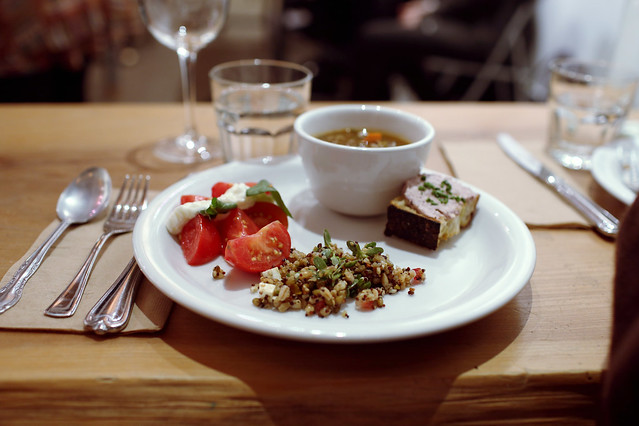
I've always been drawn to food and the art of eating and the work of feeding people, but honestly, something inside of me is terrified to let those be the guiding forces of my life. Maybe I fear failure. Perhaps I am intimidated by the amount of work and hours that being in the food industry requires. Sometimes I doubt that I even love it as much as I think I do. Still figuring it out -- but thank you, lovely female pioneers, for showing me what is possible.
Other women-in-food I admire:
Samin Nosrat (It's to Samin's credit that I'm involved in 18 Reasons in the first place!)
M.F.K. Fisher
Claudia Roden
Diana Kennedy
Elizabeth David
Alice Waters
Tamar Adler
Stella Parks
Shakirah Simley
Michelle McKenzie
Fuschia Dunlop
Amanda Hesser
Giulietta Carrelli
Gena Hamshaw
Heidi Swanson
Crystal Jones
Sarma Melngailis
Christina Tosi
Celia Sack
Suzanne Goin
Jessica Koslow
Yoko & Kayoko
Dominique Crenn
Aki Kamozawa
Elizabeth Prueitt
Caitlin Freeman
Jennifer Rubell
Joanne Chang
April Bloomfield
Sasha Wizansky
Rose Carranini
Zoe Nathan Loeb
(see my Twitter lists for women in food here)
Which women in the food industry are you inspired by? Leave a comment.
The night featured a panel of six women including Joyce, among them: Amaryll Schwertner of Boulette's Larder & Bouli Bar; Emily Luchetti, pastry chef of Waterbar and Farallon; Kathleen Weber of Della Fattoria; and Adriana Silva, co-owner of Tomatero Farm. Each told her story of entering and working in the Californian food industry.

I've always felt particularly connected to strong and independent women, the ones who are bold, fearless, and unafraid of speaking their minds (Think Mary Karr or Gabrielle Hamilton), and these women were all of those things. The common thread in the stories these women told was the desire to feed and care for people. They weren't in it for fame or glamour; they definitely were not in it for the money. Working in the food industry meant long hours, sweat, and tears, but what kept them going was the persistent engagement with the present moment and an unrelenting curiosity about the possibilities of food. These women found fulfillment in the most vital form of manual labor, a labor of love that is first and foremost essential to survival, but also wholly satisfying in a physical, emotional, and intellectual way.
Here's what I want to remember from the night:
*the importance of understanding history: what came before informs the direction going forward. This almost means discovering narratives, ethnographies, and cultural perspectives to build up one's knowledge of the food and farming ecosystem.
*the need for line cooks in San Francisco, and beyond that, the need for reform in cook's wages (by abolishing the tipping system and mandating a service charge)
*the state of the food industry now: the exponential increase in restaurants; the return to a male-dominated industry; the hype-driven restaurant business; the difficulties of being able to live/survive in San Francisco while working in the food industry.
*learning technique in cooking school is not the same as learning to taste in the kitchen.
*the importance of having a relationship with food and with the people who grow it. The impact of the consumer relationship with food and farms on the entire ecosystem.
*food as a community: these women all knew each other, supported each other, and shared tricks of the trade with each other. They had relationships not only with each other but with consumers.
*cooking as a grounding practice: "after a long day, some people come home and drink five bottles of wine, when all they really need to do is chop an onion." I need to remember this when I come home weary and wanting.

We enjoyed a sampling of the panelists' most iconic creations. Here is what we ate:
*early girl tomatoes with burrata & basil
*abruzzese lentil and chestnut stew: sweet and savory and smoky, with wheatberries, carrots, and celery
*a freekeh, quinoa, and pomegranate salad with feta & bacon
*meyer lemon rosemary toast with olive cream cheese
*star-reos (star-shaped oreos)

I've always been drawn to food and the art of eating and the work of feeding people, but honestly, something inside of me is terrified to let those be the guiding forces of my life. Maybe I fear failure. Perhaps I am intimidated by the amount of work and hours that being in the food industry requires. Sometimes I doubt that I even love it as much as I think I do. Still figuring it out -- but thank you, lovely female pioneers, for showing me what is possible.
Other women-in-food I admire:
Samin Nosrat (It's to Samin's credit that I'm involved in 18 Reasons in the first place!)
M.F.K. Fisher
Claudia Roden
Diana Kennedy
Elizabeth David
Alice Waters
Tamar Adler
Stella Parks
Shakirah Simley
Michelle McKenzie
Fuschia Dunlop
Amanda Hesser
Giulietta Carrelli
Gena Hamshaw
Heidi Swanson
Crystal Jones
Sarma Melngailis
Christina Tosi
Celia Sack
Suzanne Goin
Jessica Koslow
Yoko & Kayoko
Dominique Crenn
Aki Kamozawa
Elizabeth Prueitt
Caitlin Freeman
Jennifer Rubell
Joanne Chang
April Bloomfield
Sasha Wizansky
Rose Carranini
Zoe Nathan Loeb
(see my Twitter lists for women in food here)
Which women in the food industry are you inspired by? Leave a comment.
10.09.2013
this is the dying of the light
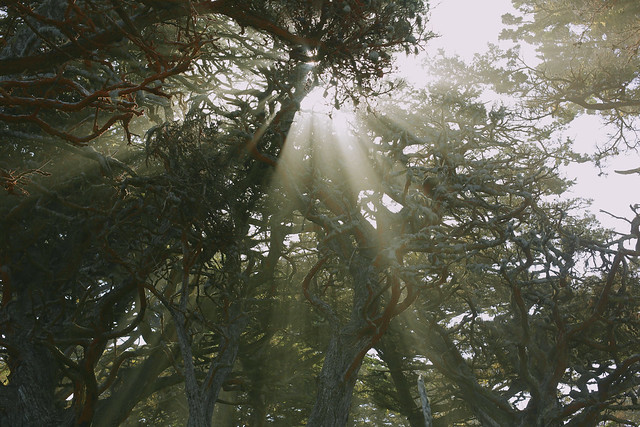
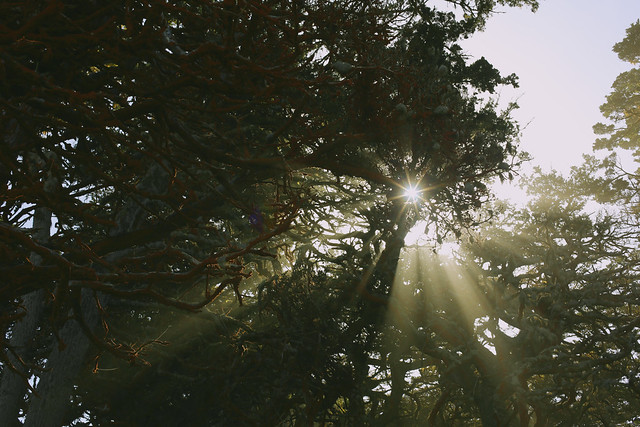
sunlight moves through me
the car sails thrusting forward
a matador's cape
(Point Lobos, February 2013)
10.07.2013
this is my bright abyss
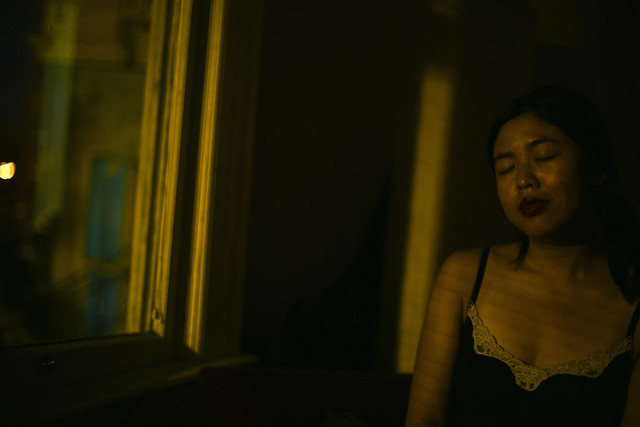
My God my bright abyss
into which all my longing will not go
once more I come to the edge of all I know
and believing nothing believe in this:
-Christian Wiman, My Bright Abyss
into which all my longing will not go
once more I come to the edge of all I know
and believing nothing believe in this:
-Christian Wiman, My Bright Abyss
10.06.2013
this is the void in silence
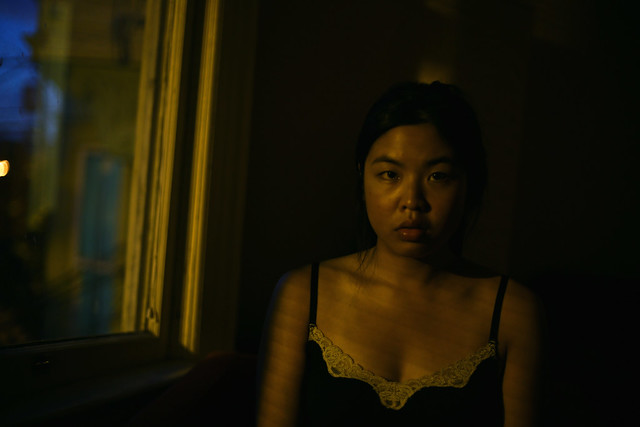
Sunday, 10/6, 7:23 PM
10.03.2013
this is the feeling of blue
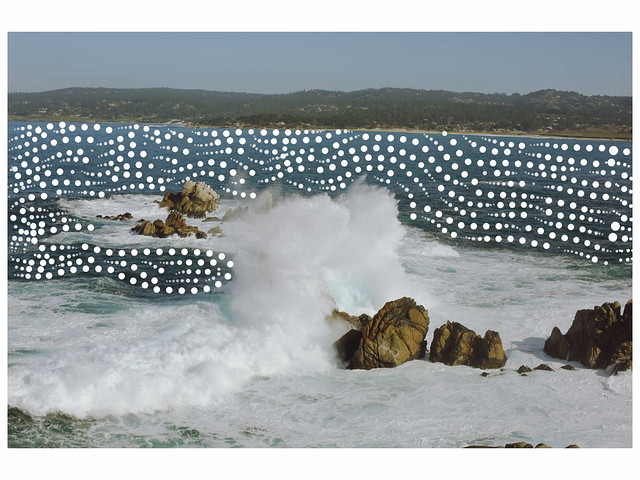
"The blue of distance comes with time, with the discovery of melancholy, of loss, the texture of longing, of the complexity of the terrain we traverse, and with the years of travel. If sorrow and beauty are all tied up together, then perhaps maturity brings with it ... an aesthetic sense that partially redeems the losses time brings and finds beauty in the faraway."
"Sometimes gaining and losing are more intimately related than we like to think. And some things cannot be moved or owned. Some light does not make it all the way through the atmosphere, but scatters."
"Some things we have only lost as long as they remain lost, some things are not lost only so long as they are distant."
-Rebecca Solnit, "The Blue of Distance"
(Point Lobos, February 2013)
10.02.2013
this is what remains
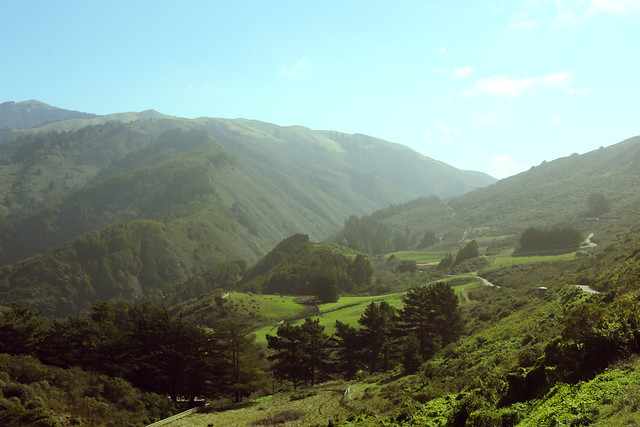
"The places are what remain, are what you can possess, are what is immortal. They become the tangible landscape of memory, the places that made you, and in some way you too become them. They are what you can possess and what in the end possesses you."
"Every love has its landscape. Thus place, which is always spoken of as though it only counts when you're present, possesses you in its absence, takes on another life as a sense of place, a summoning in the imagination with all the atmospheric effect and association of a powerful emotion. The places inside matter as much as the ones outside."

"Is it that the joy that comes from other people always risks sadness, because even when love doesn't fail, mortality enters in; is it that there is a place where sadness and joy are not distinct, where all emotion lies together, a sort of ocean into which the tributary streams of distinct emotions go, a faraway deep inside; is it that such sadness is only the side effect of art that describes the depth of our lives, and to see that described in all its potential for loneliness and pain is beautiful?"
-Rebecca Solnit, "The Blue of Distance"
-Rebecca Solnit, "The Blue of Distance"
(Big Sur, February 2013)
Labels:
big sur,
California,
coastline,
good words,
water
Subscribe to:
Posts (Atom)
